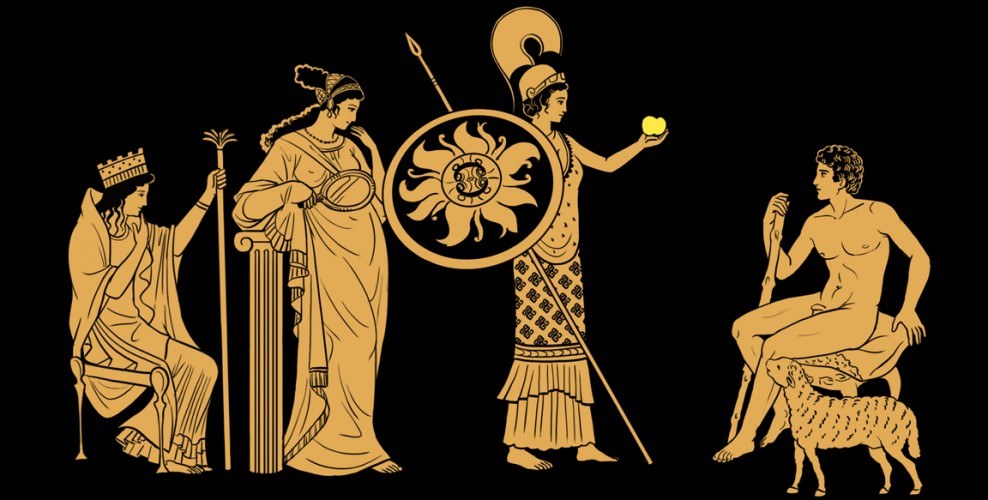While intuitively we are inclined to dichotomize the seemingly disparate fields of art and technology, there is no denying that ours is the era of the digital creative. Whether our medium of choice be paintbrush or keyboard, the driving force, that which makes kindred spirits of traditional art and its digital progeny, is always creativity.
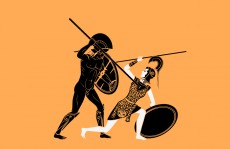 For children’s museum-app designer Albin Spinner, this relationship takes on a whole new significance. Kid-in spoke with the tech/art enthusiast and father of three about his ongoing commitment to his children’s edification, the history and potential for creative technology and the brave new world of cultural transmission.
For children’s museum-app designer Albin Spinner, this relationship takes on a whole new significance. Kid-in spoke with the tech/art enthusiast and father of three about his ongoing commitment to his children’s edification, the history and potential for creative technology and the brave new world of cultural transmission.
In the process, we discovered yet another counterintuitive connection; Johannes Guttenberg and Chuck Hull share a lot more in common than one would think. Who knew?
How did you come to love art, mythology, and technology?
AS As a child, family vacations were populated with countless churches, sacristies, altars, and roman portals that my parents would inevitably stop to visit. Now I have grown into a museum geek.
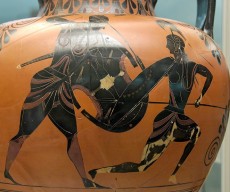 Mythological characters present in my childhood memories through a TV series called Ulysses 31 – a science fiction adaptation of the mythical voyage of Ulysses. I enjoyed the animations for what they were. Only years later did I realise the timelessness of the story.
Mythological characters present in my childhood memories through a TV series called Ulysses 31 – a science fiction adaptation of the mythical voyage of Ulysses. I enjoyed the animations for what they were. Only years later did I realise the timelessness of the story.
My first contact with digital technology was in my teenage years. The new generation grows up immersed in technology. Time will tell the influence this will have. I have a feeling that there will be a bigger generational divide between our children and us than there was between our parents and us.
What do you do besides devising apps?
AS I have a degree in applied mathematics and trading emerging market bonds, but my personal background, as a father of three boys, prepared me better for developing apps.
How so?
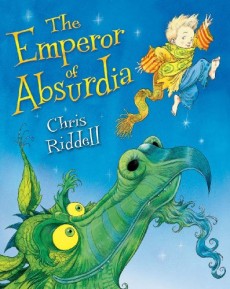 I enjoy a parent’s educational role. I’m not alone, i.e., children’s illustrator Chris Riddell told me that he wrote The Emperor of Absurdia specifically for his son. I really enjoy introducing art history and mythology to my three boys. And, I feel that mobile technology will change the way we tell stories to children.
I enjoy a parent’s educational role. I’m not alone, i.e., children’s illustrator Chris Riddell told me that he wrote The Emperor of Absurdia specifically for his son. I really enjoy introducing art history and mythology to my three boys. And, I feel that mobile technology will change the way we tell stories to children.
The idea for this App came to me the day I took my eldest son to the British Museum to introduce him to Ancient Greek art. My strategy was to concentrate on a particular story rather than to talk about abstract aesthetic concepts. I showed him a series of vases recounting the story of the Trojan War and was touched that this two thousand five hundred year-old story could still resonate with a five year-old. He managed to follow the plot even thought the vases were scattered across different room and floors. The day was added to the (short) list of my educative successes!
Why did you choose the Trojans as the subject for your new venture?
AS The choice was linked to the particular closeness I experienced with my son at the British Museum. Generally, I’m fond of art in the context of history and culture (British Museum) as opposed to decorative art /design (Victoria and Albert Museum) or visual art (the National Portrait Gallery). I wanted to tell a cultural story. It’s difficult to tell; it needs all the help that animation can give to keep children focused. If children make the effort, the cultural investment will be with them all their lives.
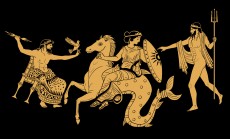 How do you balance tech with hands-on in your children’s education?
How do you balance tech with hands-on in your children’s education?
AS Mobile devices can be great educational tools. At the same time, they can have a hyper-stimulating effect. In our family, we give the children a potentially hypnotic mobile device (iPad). In return, they give some of their focus on a cultural subject.
What has your general experience been introducing your sons to art?
AS Introducing art to children is personal, volatile, and difficult to read. Sometimes I have the impression that a particular visit was wasted – then a certain character will appear out of nowhere in his drawings.
To be enjoyable, the experience needs to have something in it for them. The eldest enjoyed the Koc museum in Istanbul, which displays classic vehicles – from cars to trams. The mummies exhibit at the Louvre is another classic. The sheer violence of a corpse in a glass case somehow appealed to him.
Introducing art in the contemplative sense has been more difficult. I am doing it chronologically starting with antiquity. Next, I am thinking about introducing Asian art and its aesthetic power through suggestion. I am not planning to go to figurative art right away. I need all the digital help I can get and I cannot find enough of those tools at present.
In respect to this issue, can you explain your app to a layperson? How does it help teach about history and art and how does it work?
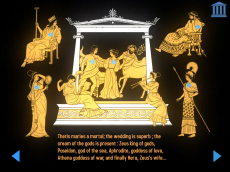 AS The app is an animated book. It tells the mythical story of the Trojan War through a series of playful animations. The narrative power of mythology is enhanced by the rich user-experience offered by the tablet. The illustrations in the interactive book are based, to a large extent, on those found on antique Greek vases. http://www.kichigai.com/en/app.html.
AS The app is an animated book. It tells the mythical story of the Trojan War through a series of playful animations. The narrative power of mythology is enhanced by the rich user-experience offered by the tablet. The illustrations in the interactive book are based, to a large extent, on those found on antique Greek vases. http://www.kichigai.com/en/app.html.
For a child, the British Museum can be daunting. The objects are behind glass and cannot be touched or manipulated. The app is designed to complement a visit by allowing the child to play with the vases at will. Reading becomes active, stimulating and playful.
The interactive aspect of the app makes this mythical story more palatable for children. They learn while playing.
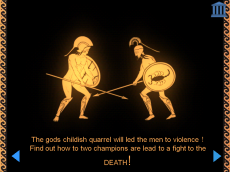 How else are museums and cultural education daunting for young children?
How else are museums and cultural education daunting for young children?
AS Young kids are closer to nature than culture. They typically do not have the cultural background to appreciate art like adults. This can be an asset; they probably appreciate cubist painting more naturally, without the figurative straitjacket. It’s is a common teaching by both Zen masters and Picasso: adults need to come back to their original perception.
Children are not familiar with our concept of art. Mine are as likely to admire the red leaves of a tree in the street as a masterpiece. It is also difficult to grasp sacralisation of art; what is this big house all about? The monumental size of the museum adds to the daunting feeling. The British Museum is designed as a temple for art: to impress. If you scale it to the size of an average six-year-old, it’s twice as imposing as for 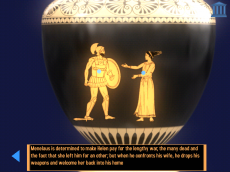 an adult.
an adult.
Museums are also about art history – an acquired taste. My children are unlikely to appreciate a contemplative afternoon at the Tate. There might be kids out there who do. The children that I know are often more attracted to moving images than to inanimate objects. This tends to make the traditional model of a museum, with its static exhibitions, rather unattractive.
Why is it important and what are we gaining as a culture through interactively merging history and technology in such engaging ways for both kids and adults?
AS I am a humanist at heart. Art history carries a spiritual aspect that needs to be carefully transmitted to our children.
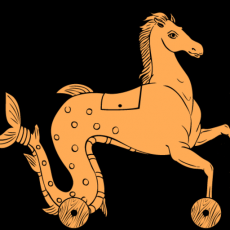 What I term “cultural education technology” is a great way to bring a story or a painting to life. In my case, the advantage of the tablet is its ability to present interactive content. This allows me to tackle a number of challenges that may arise in the telling of a classical-age story. For example, these often feature a confusing array of characters. The multimedia content of a tablet can help identify the characters easily; just touching the screen reveals the character’s name. Character animations can also help spark even more life to our stories.
What I term “cultural education technology” is a great way to bring a story or a painting to life. In my case, the advantage of the tablet is its ability to present interactive content. This allows me to tackle a number of challenges that may arise in the telling of a classical-age story. For example, these often feature a confusing array of characters. The multimedia content of a tablet can help identify the characters easily; just touching the screen reveals the character’s name. Character animations can also help spark even more life to our stories.
Cultural education technology is also defensive. Children are being bombarded by endless tech entertainment. Parents and teachers need to make sure that their offerings can compete to educate and not just entertain. Of course no technology can replace actual reading by a parent, perhaps helped by a support. The support alone, however sophisticated, invariably falls short.
What is the ideal Museum of the future?
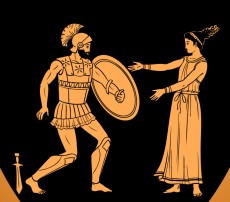 AS I look forward to a not too distant future when the museum gift shops will be providing educational tools. One can easily visualize a ‘meta-verse’ where museum lovers will be able to buy 3D representations of their favorite artifacts from the shop and create their own virtual museum on their mobile device, like some sort of 3D ‘Google Art’ project. Perhaps, they may even use their personal 3D printer to create physical representations of their favourite pieces at home.
AS I look forward to a not too distant future when the museum gift shops will be providing educational tools. One can easily visualize a ‘meta-verse’ where museum lovers will be able to buy 3D representations of their favorite artifacts from the shop and create their own virtual museum on their mobile device, like some sort of 3D ‘Google Art’ project. Perhaps, they may even use their personal 3D printer to create physical representations of their favourite pieces at home.
In a more distant future, one is allowed some science fiction ranting about full virtual reality. Like in the novel Snow Crash, the museum of the future will be accessible from a terminal and will provide the full richness of real world perceptions.
What are some possible concrete applications; what current technology, used in what way, could work towards this perfect future Museum?
AS For adults, the “internet of things” as well as the emergence of augmented reality should have obvious applications in the field of museology. We have smart grids, smart homes, and smart bins monitoring our quantified selves. The first mobile phones able to recognize bar codes arose in 1994 (in Japan). Shouldn’t there already be intelligent museums?
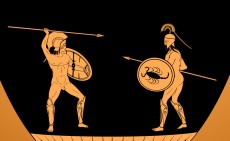 As discussed above, virtual reality is the ultimate goal. 3D cross-platform game engines are the best tools we have so far; they are great for animating moving objects with realistic texture and 3D rendering.
As discussed above, virtual reality is the ultimate goal. 3D cross-platform game engines are the best tools we have so far; they are great for animating moving objects with realistic texture and 3D rendering.
For kids, I would argue that dedicated tools are best in order to stage objects appropriately. A more interactive media can help prepare the children for a museum visit. That way, they are already familiar with the objects by the time they look at the cases in the daunting museum environment.
Is this technological revolution really underway – is it going to be the way of the future? What would be some possible implications?
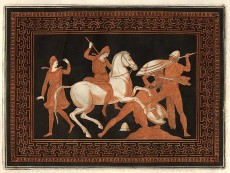 AS Mobile technology is just another medium that can be used to spread the cultural aura of art. It is not the first media evolution: when Pierre-Francois Hugues d’Hancarville published his edition of The Collection of Etruscan, Greek and Roman Antiques from The Cabinet of Sir William Hamilton in 1766, the colored plates – printed using a special process – made a great impression internationally. These engravings, reproducing the artwork adorning the Greek vases of Sir Hamilton, had global reach. The beauty of the works of the classical painters found a new medium and at the same time it broadened its artistic reach. Similarly, mobile technology will help to broaden the traditional audience of museums.
AS Mobile technology is just another medium that can be used to spread the cultural aura of art. It is not the first media evolution: when Pierre-Francois Hugues d’Hancarville published his edition of The Collection of Etruscan, Greek and Roman Antiques from The Cabinet of Sir William Hamilton in 1766, the colored plates – printed using a special process – made a great impression internationally. These engravings, reproducing the artwork adorning the Greek vases of Sir Hamilton, had global reach. The beauty of the works of the classical painters found a new medium and at the same time it broadened its artistic reach. Similarly, mobile technology will help to broaden the traditional audience of museums.
In his concept of the ‘imaginary museum’, André Malraux already analysed the implication of high-fidelity color images and how they, in effect, made the public independent from the exhibition hall. Digital technologies are likely to challenge our vision of a museum even more.
When 3D printing is able to replicate an object to the closest micron, it may become difficult to differentiate the copy from the original. Museums could be reduced to the physical place where the original object lies. This original object would be technically identical at the molecular level to its multiple copies. Those copies would then be available to anybody owning the virtual object and equipped with 3D printing technology. In this way, museums would then become the brand manager: the British Museum would own and manage the concept (as well as the physical objects) of their Greek vase collection.
How far behind are we currently from the ideal?
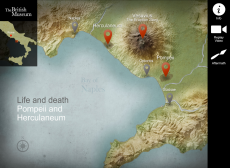 AS For now, there are plenty of great museum apps but most are targeted towards adults, i.e., the collection wall at the Cleveland museum: http://mw2013.museumsandtheweb.com/paper/transforming-the-art-museum-experience-gallery-one-2/).
AS For now, there are plenty of great museum apps but most are targeted towards adults, i.e., the collection wall at the Cleveland museum: http://mw2013.museumsandtheweb.com/paper/transforming-the-art-museum-experience-gallery-one-2/).
For kids, there’s “Pompeii and Herculaneum”, a British Museum app that illustrates their 2013 exhibition. It offers pictures of the main features, making it a good tool to introduce famous Pompeii artifacts to children.
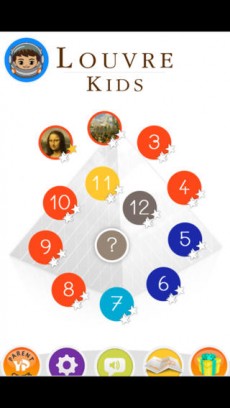 The app “Louvre for Kids” proposes some simple games (pattern recognition) using some of the famous paintings from the biggest museum in the world as a canvas.
The app “Louvre for Kids” proposes some simple games (pattern recognition) using some of the famous paintings from the biggest museum in the world as a canvas.
A similar app exists for the Pompidou Modern Art Museum. The collection “Play With” works in the same vein, using paintings by famous artists (e.g. Claude Monet) and offering creative activities.
My favorite is the one from the Taipei museum. I went to Taipei once and could not make it to the museum. This app assuaged my frustration.
There are projects out there testing boundaries:
• Google Art: http://www.google.com/culturalinstitute/project/art-project
• 3D Ancient Wonders: http://www.3dancientwonders.com/
Also, a few interesting on-line galleries:
• Artsy: http://artsy.net/
To this day, most major museums have been slow to develop those mobile tools. The private sector is starting to fill this gap, i.e. this app by walkappabout: http://walkappbout.com/index.php/tours/british-museum
Who else is doing specifically what you’re doing with mobile apps?
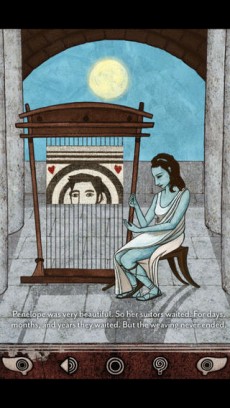 AS There are a few other Classical apps out there. Check out “The Voyage of Ulysses” by Elastico, which tells the story of The Odyssey.
AS There are a few other Classical apps out there. Check out “The Voyage of Ulysses” by Elastico, which tells the story of The Odyssey.
Are you working privately with any museums to introduce your app, or is it for public consumption currently?
AS For now, the app is for public consumption. Large public museums are difficult to partner with.
Will you align yourself with any institution for designing further private museum technology?
AS I would love to forge those partnerships.
Would you like to see your app introduced into schools?
AS I would love to see that happening. It does look like the US is more advanced in this field than Europe.
What are you working on, moving forward, in the vein of art apps for children?
AS I am still experimenting with my boys. But my next app is likely to be a story of Chinese mythology. I would like to explore how one can introduce children to monochrome Chinese ink painting. It is a difficult technique to try to reproduce the subtle richness of the chromatic world. Away from classical figurative representation, a virtuoso of the brush can, thanks to monochrome techniques, suggest light and shadow, volume and rhythm.
Something to look forward to. Does your eldest use/enjoy The Trojan War?
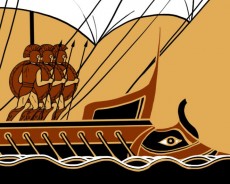 AS Not surprisingly, he particularly enjoys the part where Achilles kills Hector! I feel that the app has raised his awareness of classical art. He now regularly recognizes ubiquitous classical representations. The other day, I even found in his Christmas-wish list the mention of some classical Greek figurines that we saw on the Louvre website. Granted, this was part of a twenty-page list, but it still marks a great personal success!
AS Not surprisingly, he particularly enjoys the part where Achilles kills Hector! I feel that the app has raised his awareness of classical art. He now regularly recognizes ubiquitous classical representations. The other day, I even found in his Christmas-wish list the mention of some classical Greek figurines that we saw on the Louvre website. Granted, this was part of a twenty-page list, but it still marks a great personal success!
-Larissa Zaharuk
To view more of Trojan War: http://kichigai.com/en/aboutus.html

